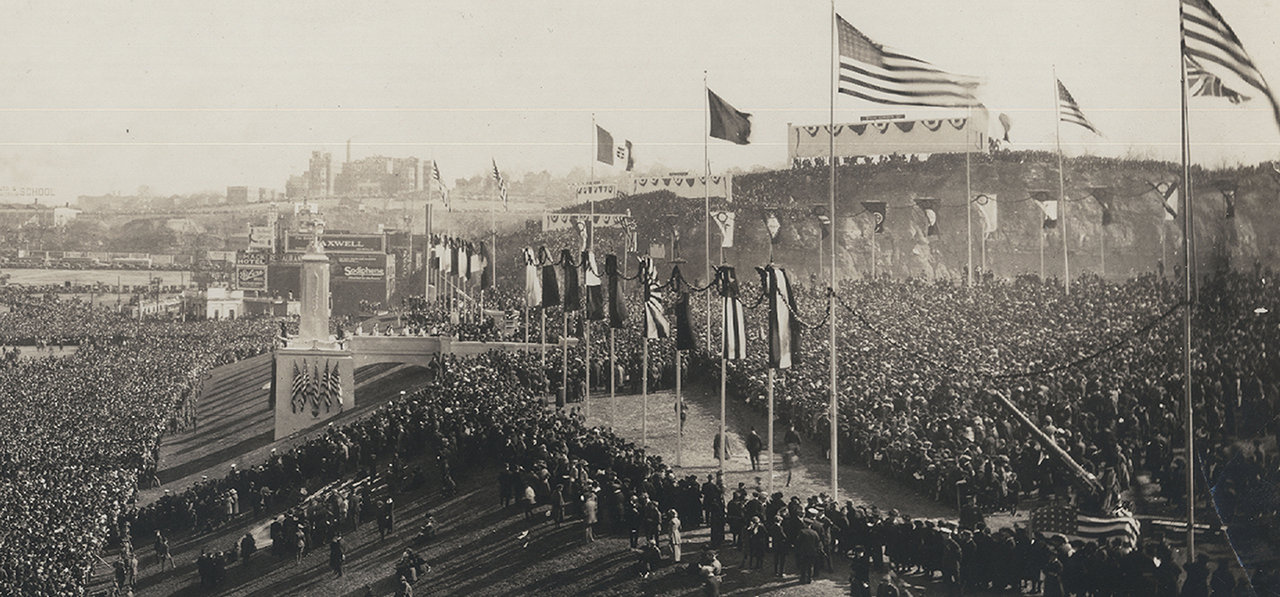Union Station invites you to pause to remember the thousands of souls who passed through our station on their way to defend this nation. You may have noticed our neighbor at the National WWI Museum and Memorial or know our friends at the VFW National Headquarters. These brave men share a bond built around their shared mission. Now Union Station shares the significance of our role in the Great War.
Up and at ‘em!
On November 1st, 1914, Union Station opened our doors to a world at war. Two months before Union Station was completed, international tensions reached a boiling point that led to all-out conflict on a level never seen before. For our first years of operation, Union Station played a pivotal role in sending supplies, troops, and weapons to the front lines. With the most modern fixtures at the time, our halls became a critical hub of travel and support. As brave soldiers boarded the trains, they took one last look at the land they devoted the rest of their lives to defending.
One Last Look at Home
In 1917, the great war raged on. As President Wilson declared war on Germany, there came the call for more support than ever. Union Station answered the call by sending up to 271 trains in one day—that’s almost 12 trains an hour! That year, we saw over 79,368 trains depart, many of them carrying men who hadn’t seen anywhere outside of their hometown, much less international warzones.
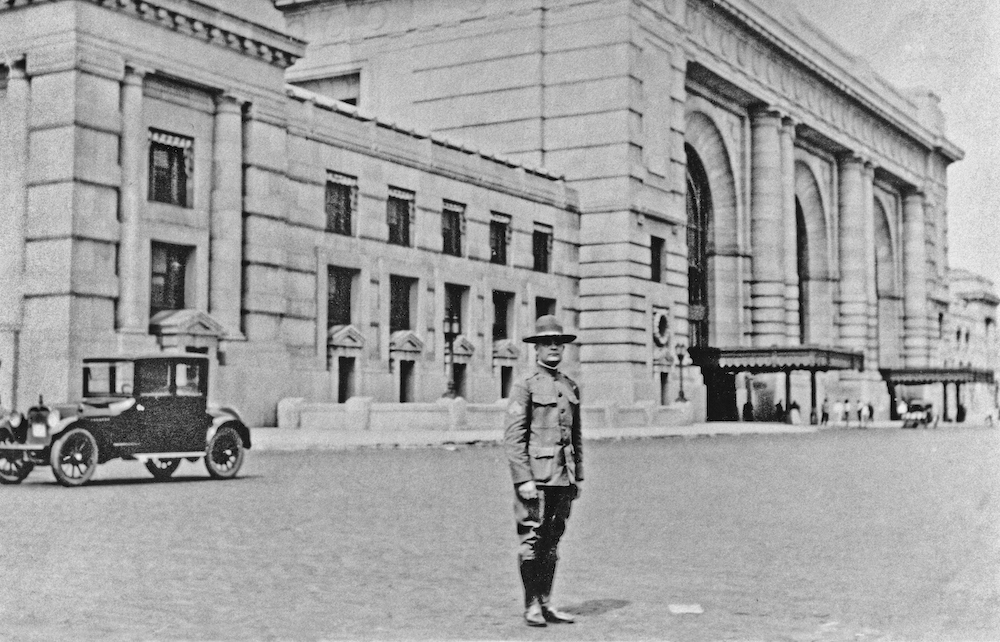
Over the next year, thousands of troops and travelers walked to their train under the security and grandeur of Union Station’s grand hall. The rail system became crucial to the war effort around the clock. Union Station became a post for the American Red Cross, other groups set up operations in our hall taking donations from the public. With one of the most advanced rail systems of the time, Kansas City played a pivotal role in the outcome of WWI. Our city was also one of the earliest affected before the US was even involved.
Belle’s Story
Once described as living an unusually wholesome life, Belle Naish and her husband Theodore (1) loved taking long walks in the country near Edwardsville, Kansas. The couple settled in Kansas City and lived a modest, comfortable life. In late April 1915, they departed from Union Station on a train headed to New York. Once there, they boarded the Lusitania to see Theodore’s family in Ireland.
Belle looked over the railing as the Lusitania edged ever so closely to their final destination. Wanting to tend to a seasick Theodore, Belle started to walk back to the couple’s cabin. On her way back, she heard a crash as the entire ship shuddered and water began to rain down on her. She rushed back to the cabin, where she and her husband helped each other into life jackets.
As the couple helped other passengers on the top deck, they were split up when a second U-boat torpedo struck the Lusitania, sending lifeboats and shrapnel flying. Belle was saved by a man overturning a lifeboat, but Theodore was lost at sea. The lives lost that day propelled the US to join World War I. Even after the war, Belle continued to keep her husband’s legacy alive.
After the loss of her husband, Belle returned to Edwardsville. She devoted her life to philanthropy throughout Kansas City, eventually donating 180 acres of land to the Boy Scouts of America. This land became Camp Naish as a memorial to her late husband. Belle never remarried and passed away in 1950.
From the beginning to the aftermath, Kansas City and our citizens are forever etched into the history of World War I. With an overwhelming abundance of patriotism, citizens played a pivotal role in the development of the National WWI Memorial.
The Gratitude of a Grateful People
Kansas Citians devoted their daily lives to the war effort for years. As the armistice signaled the end of the war, our citizens wanted a place to memorialize the sacrifices of the men and women who served in WWI. Just two weeks after peace was made possible, KC got to work (2) creating one of the most important national monuments in the United States.
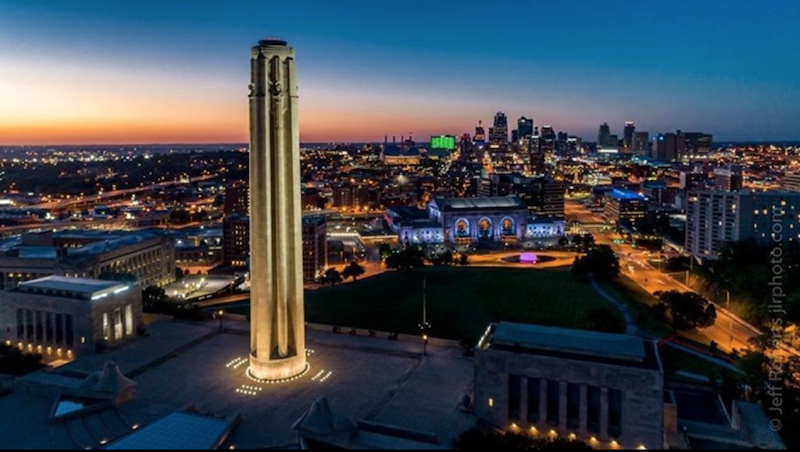
“From its inception, it was intended that this Memorial should represent on the part of all people, a living expression for all time of the gratitude of a grateful people to those who offered and who gave their lives in defense of liberty and our country.”
–R.A. Long
The organization of citizens known as the Liberty Memorial Association led the development of the memorial. Through our combined efforts, Kansas City raised over $2.5 million in just 10 days. That’s over $44 million in modern terms! In the years following, a national contest was held, and H. Van Buren Magonigle’s design was chosen by popular vote amongst thousands of Kansas City residents.
A Monumental Effort
World War I still serves as a reminder of what’s possible when America comes together for one common goal. Throughout the war, Kansas City played a pivotal role for every American on the front lines and the factory floors. Thanks to an industrial boom, a growing immigrant population, and patriotism in our citizens, Kansas City became a powerhouse that turned the tide of war.
The efforts of our city were felt across the country and around the globe. With one of the most robust logistical and industrial infrastructures in the US, KC garnered the attention of international leaders. Our citizens’ collective efforts and the Liberty Memorial Association led all five Allied generals to Kansas City for the site dedication of the National World War I Memorial in 1921.
Commanding Attention
With a crowd of over 200,000 people watching, all five Allied commanders met on the hill across from Union Station for the first time in history. Just 7 years after the first train left our station, people flooded Kansas City by the train load. By modern standards, this would be the modern equivalent to a Super Bowl and World Series parade paired with a Taylor Swift concert. So just who were the men that commanded all this fanfare?
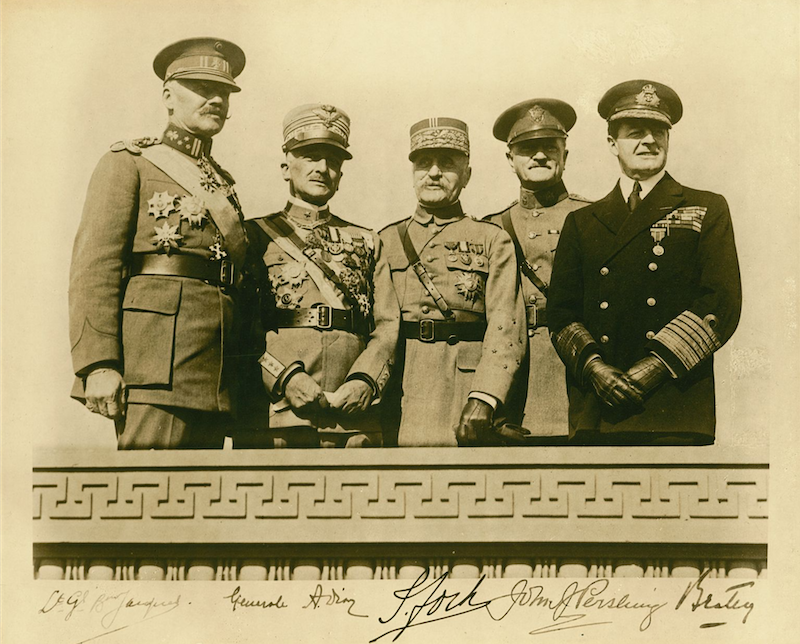
Lt. Gen. Baron Jaques – Belgium
Jacques, who commanded the first detachment to clash with the Germans in 1914, told United Press International (3) in October 1919, “When America came to the war, just the mere knowledge of it had an enormous effect on Belgium. Belgium gave a great sigh of relief. Our spirits rose by bounds, while the Germans’ began to drop. When American soldiers entered the Belgian line to join in the conflict, words could not express our feelings. We knew the end was near and that the outcome of the war had practically been determined.”
Gen. Armando Diaz – Italy
General Diaz is remembered for his leadership as Italy held the line against the Austro-Hungarian army in a battle known as the Stand at the Piave (4). It’s also worth noting that Kansas Citian Ernest Hemingway was wounded in this battle while volunteering for the American Red Cross 4th section.
Diaz is also remembered for the caution and cunning tactics that led Italy to victory with minimal casualties in the decisive Battle of Vittorio Veneto (5). His heroics were immortalized in the song The Legend of the Piave. This song went on to become the national anthem of the Republic of Italy for a short few years.
Marshal Ferdinand Foch – France
Past 60 years old, many people are preparing for retirement. Marshal Foch (6), on the other hand, was leading some of the most impactful offensive operations in WWI. With Germany building up strength through 1917, Ferdinand Foch was called to combine the strength of the French, English, and Belgian armies across the Western Front.
As commander in chief of the allied armies, Marshal Foch helped the Western Front outlast Germany’s spring offensive. This allowed the Allies to build up steam while Germany regrouped after suffering their first heavy losses following the Second Battle of Marne (7) in 1918. Foch continued to push the Axis powers back with a series of successful counteroffensives known as the Hundred Days Offensive (8). His successful leadership granted him France’s highest military honor as Marshal. He was also granted the title in Great Britain and Poland.
Following the war, Marshal Foch helped negotiate the Treaty of Versailles (9). Foch continued to play a pivotal role on the political stage. He served as a prominent diplomatic and military figure until his death in 1929 at the age of 77.
Admiral Lord David Beatty – Great Britain
Beatty’s reputation throughout WWI (10) remains spotty, yet nonetheless impressive. In 1913, he was recognized as the youngest naval secretary in over a century under Winston Churchill. This started his controversial military career in rough waters.
His very first experience with war at sea was in 1914 at the battle of Heligoland Bight (11). This would become the first major naval engagement, sparking fears amongst both military and civilian vessels around the world. Britain owed the success of this battle to Beatty’s timely intervention. However, poor communication would plague the British navy through subsequent battles.
Although major battles in his career, such as Jutland (12), were still a topic of heated debate, Beatty joined his fellow Allied leaders on November 1st, 1921 as First Sea Lord in the Royal Navy. He remains one of the most controversial figures involved in the site dedication.
Gen. John (Black Jack) Pershing – US
The WWI dedication was more of a homecoming for Missouri native John “Black Jack” Pershing. General Pershing is remembered as one of the most well-traveled, influential, and charismatic officials in World War I. His military career started as an attaché to Japan during the Russo-Japanese War. After his promotion to brigadier general by President Roosevelt, he notably hunted down Pancho Villa and his rebels throughout Mexico.
His passion for service and tenacity made him a perfect choice to train and lead one of the largest American forces in history. General Pershing (13) evolved over 2 million men in the US military through innovative tactics and keen insights to turn the tide of the war. The millions of men who passed through Union Station rode the same rails as their commander as they joined him on the front lines. This made Union Station and the lawn where all those soldiers said goodbye to their families an incredibly significant landmark in the history of WWI.
The End?
Kansas City may have played an incredibly important role in the outcome of WWI, but we had very little time to celebrate before we were once again called to serve our nation. Through the Great Depression and our efforts in WWII, Union Station and Kansas Citians continued to reliably serve our country. From the patriotic celebration at the station to the efforts of the VFW National Headquarters, Kansas City continues to embody patriotism in America.
Honor the Fallen
Union Station invites you to walk amongst history in our grand hall. But to further understand the stories and sacrifices of soldiers in WWI, visit our friends across the street at the National WWI Museum and Memorial. Thank a vet and visit the historic landmarks around Kansas City to honor the brave men and women who allow us to live in the land of the free.
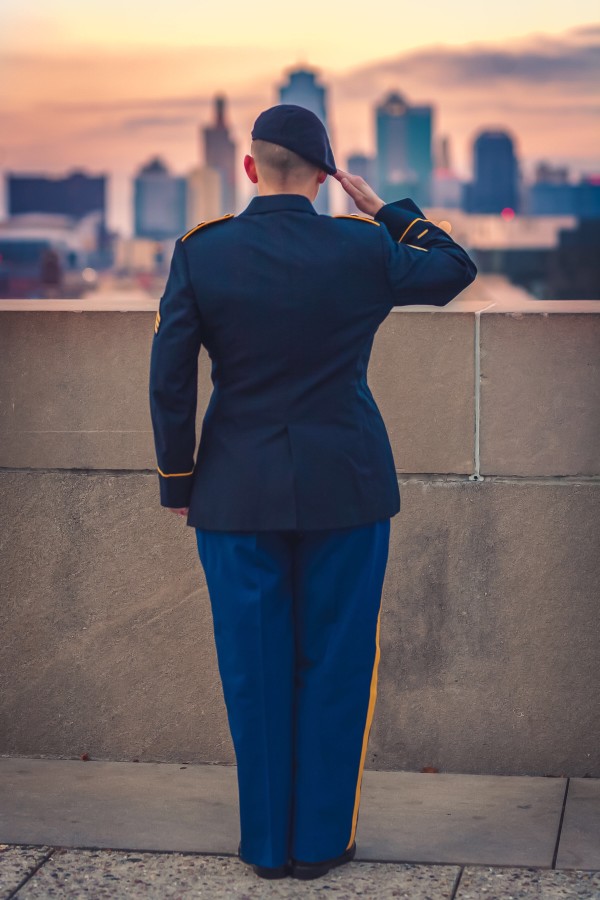
Sources:
- “Mrs. Theodore Naish (Belle Saunders).” The Lusitania Resource, 22 May 2011, https://www.rmslusitania.info/people/second-cabin/belle-naish/
- KansasCity and Matt. “World War I and KC: The Swell of Patriotism, History and the Lessons That Reverberate Today.” The Kansas City Star, 5 Apr. 2017, https://www.kansascity.com/news/local/article142847044.html
- “Lt. Gen. Baron Jacques.” The American Legion, https://www.legion.org/distinguishedservicemedal/1921/lt-gen-baron-jacques.
- Learn History Easily. https://en.historylapse.org/second-battle-of-the-piave-river.
- Wakefield, Alan. “Battle of Vittorio Veneto.” Encyclopedia Britannica, 16 May 2017, https://www.britannica.com/topic/Battle-of-Vittorio-Veneto.
- “Ferdinand Foch.” HISTORY, 7 Sept. 2023, https://www.history.com/topics/world-war-i/ferdinand-foch.
- Watson, Stephen C. McGeorge and Mason W. The Marne, 15 July–6 August 1918.
- “Hundred Days Offensive — Never Such Innocence.” Never Such Innocence, https://www.neversuchinnocence.com/hundred-days-offensive-first-world-war.
- “Milestones: 1914–1920.” Office of the Historian, https://history.state.gov/milestones/1914-1920/paris-peace.
- “Beatty, David Beatty, Earl.” The International Encyclopedia of the First World War, Ed. by Ute Daniel, Peter Gatrell, Oliver Janz, Heather Jones, Jennifer Keene, Alan Kramer, and Bill Nasson, Issued by Freie Universität Berlin, https://encyclopedia.1914-1918-online.net/article/beatty_david_beatty_earl.
- “First World War – Battle of Heligoland Bight, 28 August 1914.” Royal Museums Greenwich, https://www.rmg.co.uk/stories/blog/first-world-war-battle-heligoland-bight-28-august-1914
- “Battle of Jutland, Greatest Naval Battle of WWI, Begins.” HISTORY, 28 Oct. 2009, https://www.history.com/this-day-in-history/battle-of-jutland.
- Experience, American. “General John J. Pershing.” AmericanExperience , 5 July 2018, https://www.pbs.org/wgbh/americanexperience/features/macarthur-general-john-j-pershing/

